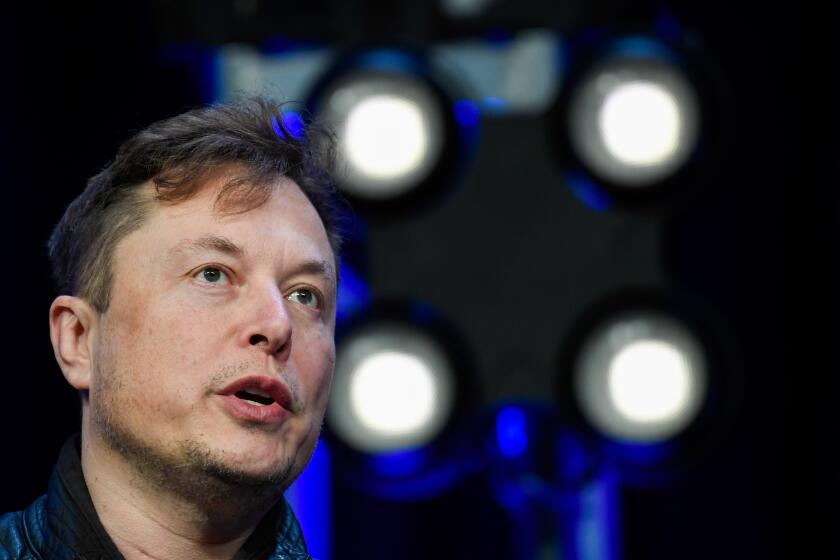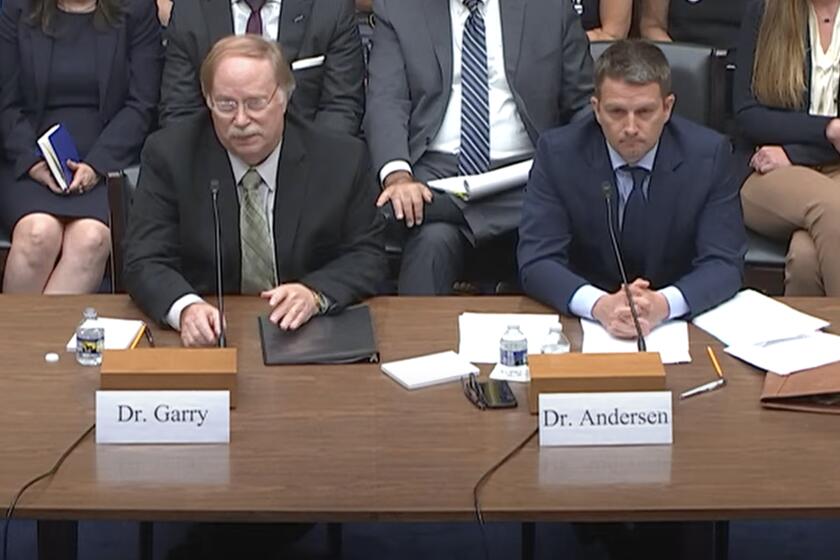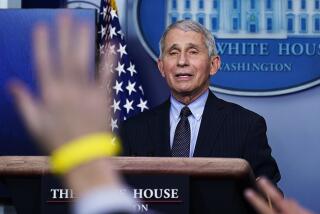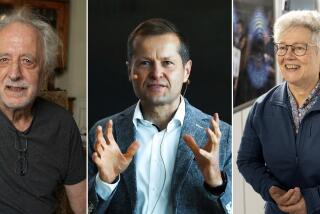Column: How a scientific ‘breakthrough’ fell apart amid allegations of plagiarism and fakery
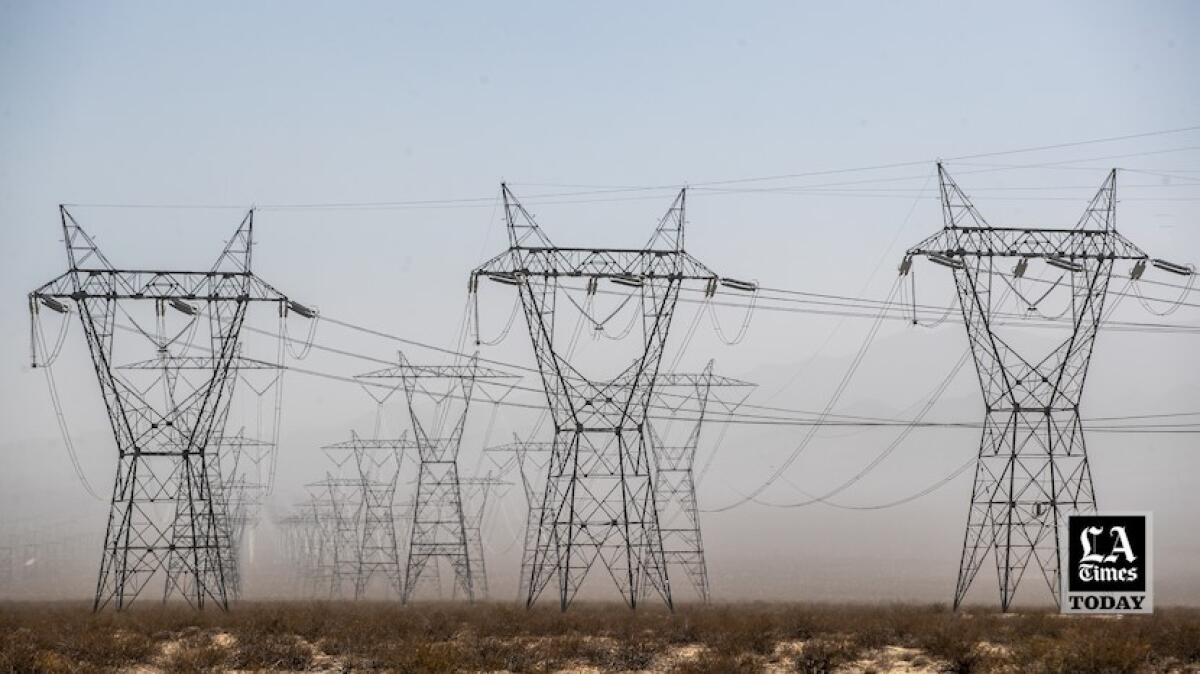
- Share via
As scientific breakthroughs go, the one announced last March by a team from the University of Rochester was especially eye-opening.
Led by physicist/engineer Ranga P. Dias, they reported in an article in Nature the discovery of a room-temperature superconductor — a material that can conduct electricity with no loss of efficiency from friction and no production of heat.
The paper generated breathless news reports touting the prospect for batteries of unprecedented efficiency and electrical devices of unprecedented power —potentially “longer-lasting batteries, more-efficient power grids and improved high-speed trains,” the Wall Street Journal wrote the day after Nature’s publication.
Journals tend to take an ‘innocent until proven guilty’ approach when they see a paper that could rack up the citations and boost their ranking. That means a lot of crap ends up in the literature when it shouldn’t.
— Ivan Oransky, Retraction Watch
Sadly, those advances still lurk far off in the future. The article that set off a frenzy of speculation and anticipation was retracted by Nature on Tuesday after months of rising doubts about its claims and Dias, its lead author.
Dias didn’t reply to my request for comment. A representative speaking for him told the Rochester Beacon, an independent online publication, that he and two of his 10 co-authors “have not consented to the retraction.” The remaining eight co-authors, however, had requested the retraction.
Get the latest from Michael Hiltzik
Commentary on economics and more from a Pulitzer Prize winner.
You may occasionally receive promotional content from the Los Angeles Times.
The spokesman for Dias also denied “allegations of research misconduct” and said the physicist “intends to resubmit the scientific paper to a journal with a more independent editorial process.”
The case illustrates two discordant elements of scientific research. One is the effectiveness of science’s self-corrective process: Researchers into superconductivity raised questions about the Dias paper starting almost immediately after its publication.
The other, however, is the imperfect quality control in scientific publishing, for the question is how such a dubious paper reached the pages of Nature, one of the most prestigious scientific journals in the world — which had already retracted one paper by Dias.
The answer is that even leading journals such as Nature strive for attention.
“Journals tend to take an ‘innocent until proven guilty’ approach when they see a paper that could rack up the citations and boost their ranking,” says Ivan Oransky, the co-founder and co-editor of the indispensable blog Retraction Watch. “That means a lot of crap ends up in the literature when it shouldn’t.”
A retracted study claiming the COVID vaccine killed 300,000 Americans has been republished in an anti-vaccine journal, but it’s still weak.
Doubts about Dias’ paper continued to rise during the months after its publication, in part because the reported results failed a fundamental test of validity: They could not be replicated by other researchers. Dias also resisted requests for detailed data that would allow others to validate his claims.
Dias had long been treated as a rising star in his research field. Time named him to its 2021 list of 100 “emerging leaders who are shaping the future,” next to the performer Dua Lipa, poet Amanda Gorman, Republican politician Ben Sasse, and dozens of others.
Yet the record of his previous research was checkered. In August, a 2021 paper in Physical Review Letters was retracted with the consent of nine of its 10 co-authors, not including Dias, due to “serious doubts” about some of the data.
In September 2022, Nature itself had retracted a Dias paper claiming the discovery of room-temperature superconductivity published in 2020. The journal’s retraction notice stated that some of the data in the paper had been subjected to a “nonstandard, user-defined procedure,” which made it sound as if Dias and his co-authors had conjured it out of thin air.
In April, Science aired accusations that Dias had plagiarized extensively for his 2013 doctoral thesis at Washington State University.
It’s evident, therefore, that Dias’ most recent research reached print despite its considerable baggage. The University of Rochester, for its part, told me by email that it “has a comprehensive investigation underway into questions raised about the integrity of data across multiple papers led by Professor Dias. This investigation is ongoing and is being conducted by experts who are external to the University of Rochester.”
Let’s pause here for a quick primer on superconductivity.
The phenomenon is a Holy Grail for materials and energy researchers. That’s because transmitting electricity friction-free would enable a multitude of world-changing applications, such as “incredibly efficient power lines and electronics that never overheat,” as Scientific American outlined in March, at the time of Dias’ most recent paper.
The anti-vaccination and anti-science movements are killing thousands of innocent people. Why don’t government agencies and professional groups speak up?
Additionally, observes Scientific American, superconductors repel magnetic fields, which could lead to more efficient magnetic levitation, or maglev, trains. These materials “could produce super strong magnets for use in wind turbines, portable magnetic resonance imaging machines or even nuclear fusion power plants.”
The principle of superconductivity was discovered in 1911 by the Dutch physicist Heike Kammerlingh Onnes, who identified it in mercury at the temperature of 4.2 degrees above absolute zero, which is minus 273.15 degrees Celsius, or minus 460 degrees Fahrenheit. (He won a Nobel Prize in physics in 1913 for related research.)
Ever since then, scientists have been trying to develop materials that would exhibit the same property under real-world conditions. For the most part, they have been able to produce superconductivity only in the lab, either at super-cold temperatures or at somewhat higher temperatures but under intense pressure akin to that found near the center of the Earth.
What gave Dias’ most recent paper its pizzazz was its claim to have produced superconductivity in a compound of the artificial metal lutetium and hydrogen and doped with nitrogen, at about 69.5 degrees Fahrenheit and 145,000 pounds per square inch of pressure. That’s room temperature, and commercially achievable pressure, at least in short bursts.
So it’s not surprising that the paper generated instant excitement. Dias’ claim raised “tantalizing possibilities.” The Wall Street Journal called Dias’ finding “The Scientific Breakthrough That Could Make Batteries Last Longer,” and paired its article with an illustrated package online describing how his team achieved it.
Scientists came to see Twitter as an indispensable tool for communicating with each other and the public. As X, it’s turned into a source of scientific misinformation and lies.
News articles quoted an effusive Dias and featured photographs of him beaming in triumph in front of a blackboard filled with abstruse scribbles.
“This is the start of the new type of material that is useful for practical applications,” he told a physics conference in Las Vegas the day before his paper’s formal publication. The Wall Street journal quoted him as predicting that “we could magnetically levitate trains above superconducting rails, change the way electricity is stored and transferred, and revolutionize medical imaging.”
But doubts surfaced almost simultaneously with the publication in Nature, both because of the earlier retractions and features of the new paper that experts in the field considered dubious.
Some researchers, commenting anonymously, pointed to indications that the data in the paper appeared to be presented inaccurately and that, even if they were genuine, they didn’t show superconductivity. A paper published in Nature in May by a team of Chinese physicists re-created Dias’ compound and reported the “absence of near-ambient superconductivity” in the material, flatly contradicting Dias’ claim.
The most severe blow to the paper’s credibility came in September, when eight of its co-authors submitted a letter to Nature requesting that it be retracted. Nature’s editors had already initiated a post-publication review by outside experts. One of the experts reported that Dias had failed to provide “clear and timely responses” to their queries, which placed “the credibility of the published results ... in question.”
In their letter to Nature, the eight dissenting co-authors, some of whom had been graduate students working under Dias, said that they had “raised concerns about the study prior to publication,” Science reported. They said Dias gave some of them the choice of removing their names from the paper or allowing it proceed to publication. “Neither choice seemed tenable given that Dr. Dias was in control of our personal, academic, and financial circumstances,” they told Nature. “We did not feel that we were able to speak freely.”
It’s true that the publication of apparently unverifiable claims about superconductivity and their subsequent retraction doesn’t produce the level of social harm that we’ve seen in other cases of inaccurate or unsupported data making it into print.
These include a retracted study claiming that the COVID vaccines had killed 300,000 Americans, and the granddaddy of pernicious fakery, the 1998 publication of a British study falsely linking the MMR childhood vaccine to autism.
House Republicans used an oversight hearing to accuse former NIH officials Anthony Fauci and Francis Collins of complicity in the COVID pandemic. The loser in this cabaret is science.
The first was published by the respectable medical journal BMC Infectious Diseases, the second by the even more respectable medical journal the Lancet. Both were retracted, but not before they undermined public health (the baleful influence of the latter bedevils pediatric healthcare to this day).
This case is merely a pothole in the quest for room-temperature, commercially practical superconductivity, which will continue. The harvest is black eyes for Dias, the University of Rochester and Nature.
The most intriguing mystery is why Nature would accept a paper from the author of a paper it had retracted once, and on the same topic, without subjecting it to a level of scrutiny that might have derailed the later paper before publication.
As Oransky notes, even a journal as prestigious as Nature inclines itself toward the most provocative and attention-grabbing content. But that won’t do, given Nature’s implicit duty to defend the credibility of science, not undermine it.
More to Read
Get the latest from Michael Hiltzik
Commentary on economics and more from a Pulitzer Prize winner.
You may occasionally receive promotional content from the Los Angeles Times.



